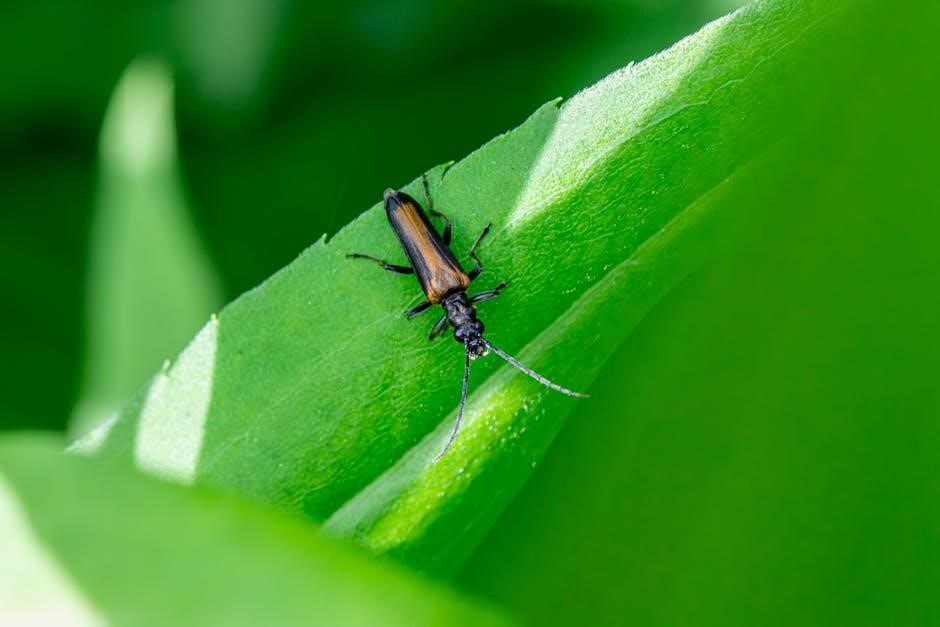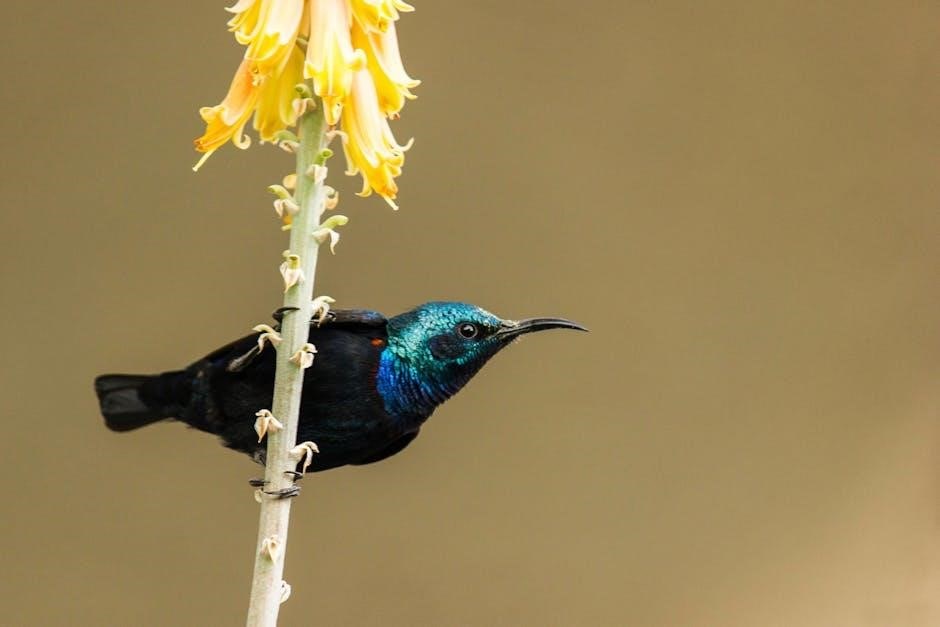Botany in Space Station 13 is a core department focused on plant cultivation, gene splicing, and mutation. It provides essential resources for the crew, supporting chefs and scientists alike. hydroponics, a key part of botany, ensures food sustainability and experimentation opportunities. As a botanist, you’ll grow crops, mutate plants, and contribute to the station’s survival, making it a versatile and rewarding role for both newcomers and experienced players.
What is Botany in SS13?
Botany in Space Station 13 revolves around the cultivation and genetic manipulation of plants. It is a critical department that ensures food production, experimentation, and resource sustainability. Botanists manage hydroponics, grow crops for the chef, and experiment with plant mutations. Tools like the Plant Analyzer and Cultivator are essential for monitoring and maintaining plant health. Botany also involves splicing genes and applying mutagens to create unique plant species with specific traits. This role is versatile, allowing players to balance practical tasks like feeding the crew with creative experiments. Botany is a cornerstone of station operations, blending agriculture, science, and strategy to keep the crew alive and thriving in space.
Why is Botany Important in SS13?
Botany is essential for sustaining life on the space station, providing food through hydroponic cultivation. Without botany, the crew relies on limited rations, risking starvation. Botanists grow crops for chefs, ensuring diverse meals, and experiment with mutations, aiding scientific research. This role supports self-sufficiency, crucial for survival, and offers creative experimentation, making it vital for both practical needs and engaging gameplay.
Tools and Equipment in Botany
Essential tools include the Plant Analyzer for detailed stats, Cultivator to remove weeds, Plant Bag for carrying items, and Wrench for moving trays, aiding efficient plant management.
Essential Tools for Botany
The Plant Analyzer is crucial for monitoring plant health and stats, while the Cultivator efficiently removes weeds. The Plant Bag carries up to 50 items or 100 seeds, simplifying harvest transport. A Wrench helps rearrange hydroponic trays, ensuring optimal growing conditions. These tools form the backbone of botany operations, enabling botanists to manage crops effectively and experiment with mutations. Additional items like gloves and HUDs enhance productivity, while the DNA Extractor and Bio Generator support advanced plant manipulation. Mastering these tools is key to thriving in botany, allowing players to grow, mutate, and optimize plants efficiently for the station’s needs.
Additional Equipment for Advanced Botany
For advanced botany, the DNA Manipulator is essential for splicing plant genes and creating unique traits. The Bio Generator converts plant matter into valuable resources, while the Seed Extractor preserves plant DNA for future use. The Composter breaks down organic waste into fertilizer, enhancing soil quality. Botanogenetic Shears allow precise removal of specific reagents, and the Condimaster aids in chemical application. These tools enable complex plant experimentation, mutations, and optimization. They are crucial for experienced botanists aiming to push the boundaries of plant genetics and contribute to the station’s scientific advancements. Mastering this equipment unlocks advanced possibilities in hydroponics and genetic engineering.

Basics of Botany
Botany in SS13 involves growing plants for food and resources. Essential tools include the Plant Analyzer, Cultivator, and Plant Bag. It’s crucial for the station’s sustainability and supports various departments.
Getting Started with Botany
To begin with botany in SS13, equip yourself with the proper gear: wear your HUD, gloves, and collect essential tools like the trowel and watering can. Familiarize yourself with the hydroponics area, ensuring trays are clean and prepared for planting. Start by adding seeds to soil, then apply nutrients and water; Monitor plant health regularly using the Plant Analyzer to track growth and identify issues. Harvest crops when mature to provide resources for the chef or other departments. Experiment with mutations by adding mutagenic formulas for unique plant traits. Keep the area organized and maintain a steady supply of nutrients to ensure optimal growth. Botany is a versatile role that combines creativity with practicality, making it rewarding for new and experienced players alike.
Understanding Plant Growth and Care
Monitoring plant health is crucial in SS13 botany. Use the Plant Analyzer to check growth stages, nutrient levels, and mutations. Ensure soil is properly watered and fertilized, as plants require consistent care to thrive. Apply nutrients like unstable mutagen or E-Z-Nutriment to induce mutations, which can alter traits or species. Regularly harvest mature plants to supply resources to the chef and other departments. Keep the hydroponics area clean and well-maintained to prevent issues. Experiment with different chemicals and formulas to discover unique plant properties. Proper care ensures high yields and diverse outcomes, making botany both practical and engaging for the station’s needs.
Advanced Botany Techniques
Unlock plant potential with splicing, gene manipulation, and mutations. Experiment with the DNA manipulator to create unique traits, pushing botany boundaries for innovative and surprising results.

Plant Splicing and Gene Manipulation
Plant splicing and gene manipulation are advanced techniques in SS13 botany, allowing botanists to create unique plant species. By combining DNA from different plants using the DNA manipulator, you can introduce new traits, reagents, or even entirely new species. This process enables experimentation with plant statistics, such as potency, yield, and growth speed, creating plants tailored to specific needs. Gene manipulation also allows for the addition of unique properties, such as glowing effects or medicinal benefits. This feature adds depth to botany, enabling botanists to craft plants that serve multiple purposes, from food production to medical applications. It’s a key aspect of advanced botany, offering endless creative possibilities for players.
Mutations and Their Effects on Plants
Mutations in SS13 botany introduce random or intentional changes to plant traits, offering unpredictable outcomes. These changes can occur naturally or through chemicals like unstable mutagen, altering a plant’s stats, such as yield, growth speed, or potency. Mutations can also introduce new reagents or traits, creating unique plant variations. For example, a mutated plant might emit light, produce healing chemicals, or even become toxic. While mutations can lead to valuable discoveries, they also carry risks, as some changes may harm the plant or the crew. Botanists must carefully monitor mutations to balance experimentation with safety, ensuring their creations remain beneficial rather than hazardous.
Roles and Responsibilities
Botanists are responsible for growing crops, supporting the chef, and experimenting with plant genetics. They ensure sustainable food supplies and contribute to station survival through creative experimentation and resource management.
Being a Botanist in SS13
As a botanist in Space Station 13, your primary role is to manage hydroponics, grow crops, and experiment with plant genetics. This job is ideal for beginners due to its flexibility and creative freedom. Botanists are responsible for supplying the chef with fresh ingredients, ensuring the crew’s food supply, and conducting research on plant mutations. You’ll use tools like the Plant Analyzer, cultivator, and plant bag to maintain and harvest crops. While the role is straightforward, it offers opportunities for experimentation, such as splicing genes or creating unique plant traits. Collaboration with other departments, like Science, is also crucial for advancing research; With proper care and attention, botany can be both rewarding and essential to the station’s survival.
Supporting Other Departments Through Botany
Botany plays a vital role in supporting other departments on the station. The Chef relies on botanists for fresh ingredients, ensuring a steady food supply for the crew. Science often requests rare or mutated plants for research purposes, aiding in advancements and experiments. Additionally, botany can supply Medical with healing agents or unique chemicals derived from plants. Cargo may also benefit from botany by trading rare seeds or harvested goods. By fulfilling these requests, botanists contribute to the station’s overall functionality and survival. This collaborative role highlights the importance of botany in maintaining interdepartmental harmony and resource efficiency, making it a cornerstone of station operations.

Automation and Optimization
Automation enhances hydroponics efficiency, allowing botanists to streamline plant growth and resource management. Optimizing crop yield through nutrient balance and mutagen use ensures sustainable and high-quality plant production.
Automating Hydroponics
Automating hydroponics in SS13 streamlines plant growth, reducing manual labor and increasing efficiency. By integrating plumbing systems, you can create self-sustaining setups for nutrient delivery and water circulation. The Bio Generator is a key tool, converting organic waste into fertilizer, while automated sensors monitor plant health. This allows botanists to focus on experimentation and mutation. Advanced setups can include auto-harvesters and nutrient injectors, ensuring consistent crop quality. Automation not only saves time but also enhances scalability, making it easier to manage large-scale plant production. With proper setup, hydroponics can run smoothly, even with minimal supervision, ensuring a steady supply of resources for the station.
Optimizing Crop Yield and Quality
Optimizing crop yield and quality in SS13 botany involves careful monitoring and strategic techniques. Using tools like the Plant Analyzer ensures you track plant health, growth rates, and nutrient levels. Applying the right amounts of water and nutrients, along with mutagens like E-Z-Nutriment or Left-4-Zed, can enhance yield and induce desirable traits. Proper spacing between plants prevents overcrowding, while the Bio Generator converts organic waste into fertilizer. Regularly testing and adjusting soil conditions ensures optimal growth. Automating nutrient delivery and harvesting systems further boosts efficiency. By refining these strategies, botanists can maximize their crops’ potential, providing high-quality resources for the station while experimenting with unique plant variations.

Resources and Further Reading
For deeper insights, check the in-game Hydroponics Guide and Plant Analyzer tool. Community guides, tutorials, and forums offer advanced tips on botany mechanics, mutations, and optimization techniques.
In-Game Resources for Botany
The game provides essential tools like the Plant Analyzer to monitor plant health and stats. The Hydroponics Guide offers detailed instructions for growing and maintaining crops. Access the Botanist HUD to track tasks and resources efficiently. Utilize chemical bottles for experimenting with plant traits, and leverage the DNA Extractor for genetic modifications. These in-game resources empower botanists to optimize growth, manage mutations, and contribute effectively to the station’s needs.
Community Guides and Tutorials
Community guides and tutorials are invaluable for mastering botany in SS13. Players can find detailed step-by-step instructions, videos, and forums discussing plant growth, gene splicing, and mutations. Tutorials often cover advanced techniques like automating hydroponics and optimizing crop yields. Many guides focus on specific aspects, such as creating rare plants or managing plant DNA. YouTube channels and community forums share tips and tricks, while experienced players provide insights into experimenting with chemicals and genetic modifications. These resources help botanists of all skill levels improve their gameplay and explore the full potential of botany in SS13, ensuring a more enjoyable and productive experience.